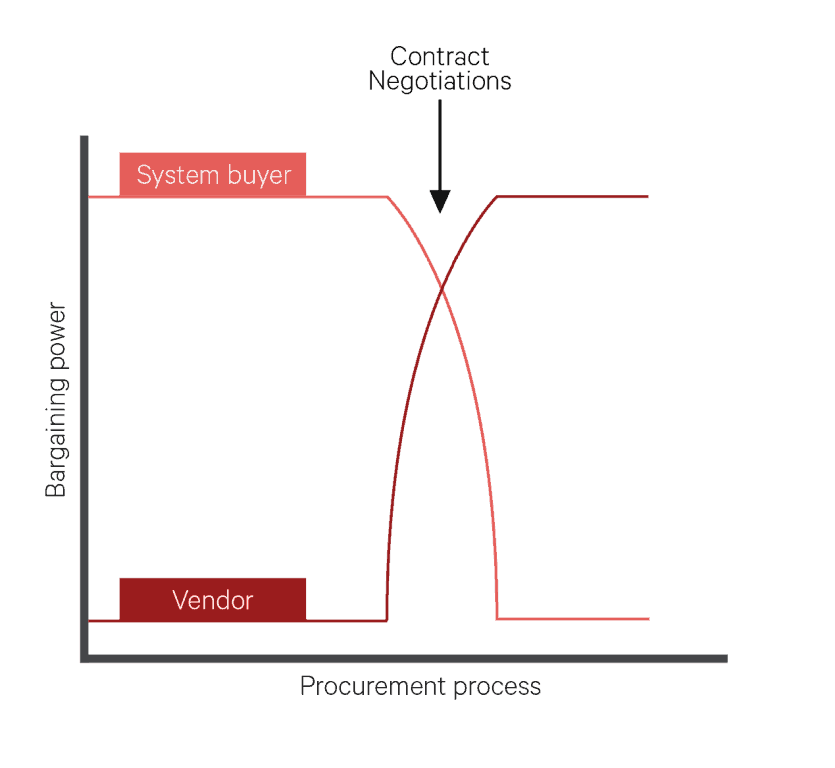Contract Negotiation and Signing
The roles and responsibilities (chief negotiator, technical expert, commercial expert, legal expert etc.) within your negotiating team should be well understood, defined, and clearly communicated. This will help to achieve a successful outcome quickly and efficiently.
Having an experienced negotiator on your team is very important. No matter how knowledgeable you are, the people sitting across the negotiating table from you are probably negotiating contracts routinely, and will have specific and extensive experience in this area.
If you have skilled professionals in your purchasing department, make them your chief negotiators, but many agencies choose to give that role to an experienced consultant with a proven track record.
It is equally important to set the negotiation objectives up front. At the beginning of the process you have tremendous power. Indeed, you can probably make the selected vendor give up more than they would like to. This will feel like a win, but may create some internal pressures within the vendor organization to recover the margins via shortcuts/change orders and have a negative impact on the project later. Be fair and aim for a win-win outcome of the negotiations.
Keep in mind that once the contract is signed, your negotiating power will decrease drastically. The diagram shows how bargaining power shifts throughout the procurement process.
Instead of squeezing every penny out of the vendor, focus on producing the most comprehensive contract document. Any discrepancies and gaps from the proposal documents need to be remedied now. Pay particular attention to items such as completeness of pricing, integrity of acceptance test documents, project timeline, maintenance agreement and payment terms.
Payment schedule
Be realistic about how much you need to pay up-front. The vendor needs to make a sizeable initial investment in production and third party purchases. 10-15% is the norm.
Other payments should be tied to clearly defined project milestones. The most common ones are:
- Final Design Review
- Factory Acceptance Test
- Equipment shipments
- Training
- Field Acceptance Tests (functional and coverage)
- Burn-in
Try to retain a reasonable, yet significant amount until final system acceptance. Fifteen percent is typical.
Click "NEXT" to watch Insight Videos on Procuring your P25 System or select a topic from the menu below.




Leave a Reply